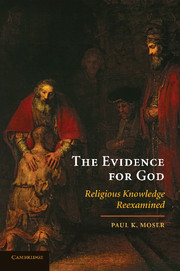4 - Personifying Evidence of God
Published online by Cambridge University Press: 05 June 2012
Summary
“…the ultimate decisions are not made in the sphere of language, where they are at most expressed; they are made at the point where we fall into arrogance or despair; or where we hear the call to obedience and true humanity – at the point, that is, where we make decisions of will.”
– Ernst Käsemann 1967, p. 35.The wilderness parable of this book's Introduction offered a specific predicament as a context for our inquiry about God's existence. Our predicament in the parable highlights our need to find a way out of a dangerous wilderness setting in Hells Canyon. It raises the question of whether an intentional rescuer for us is at hand. It also gives us an opportunity to reflect on our own resources or the lack thereof in the dangerous, life-threatening setting. We should do the same, of course, for our real-life setting. Some people doubt that anyone among us gets out alive in the end, whereas others propose that a rescuer for us is, in fact, available. If God is a real rescuer, how does one come to know that this rescuer is real? In particular, what kind of evidence is available to us?
We have not found much tenable encouragement about the reality of an intentional rescuer in the previous chapters. On the contrary, fideism and natural theology have generated some difficult problems that call into question their being commendably trustworthy avenues to knowledge of God's reality.
- Type
- Chapter
- Information
- The Evidence for GodReligious Knowledge Reexamined, pp. 185 - 230Publisher: Cambridge University PressPrint publication year: 2009



